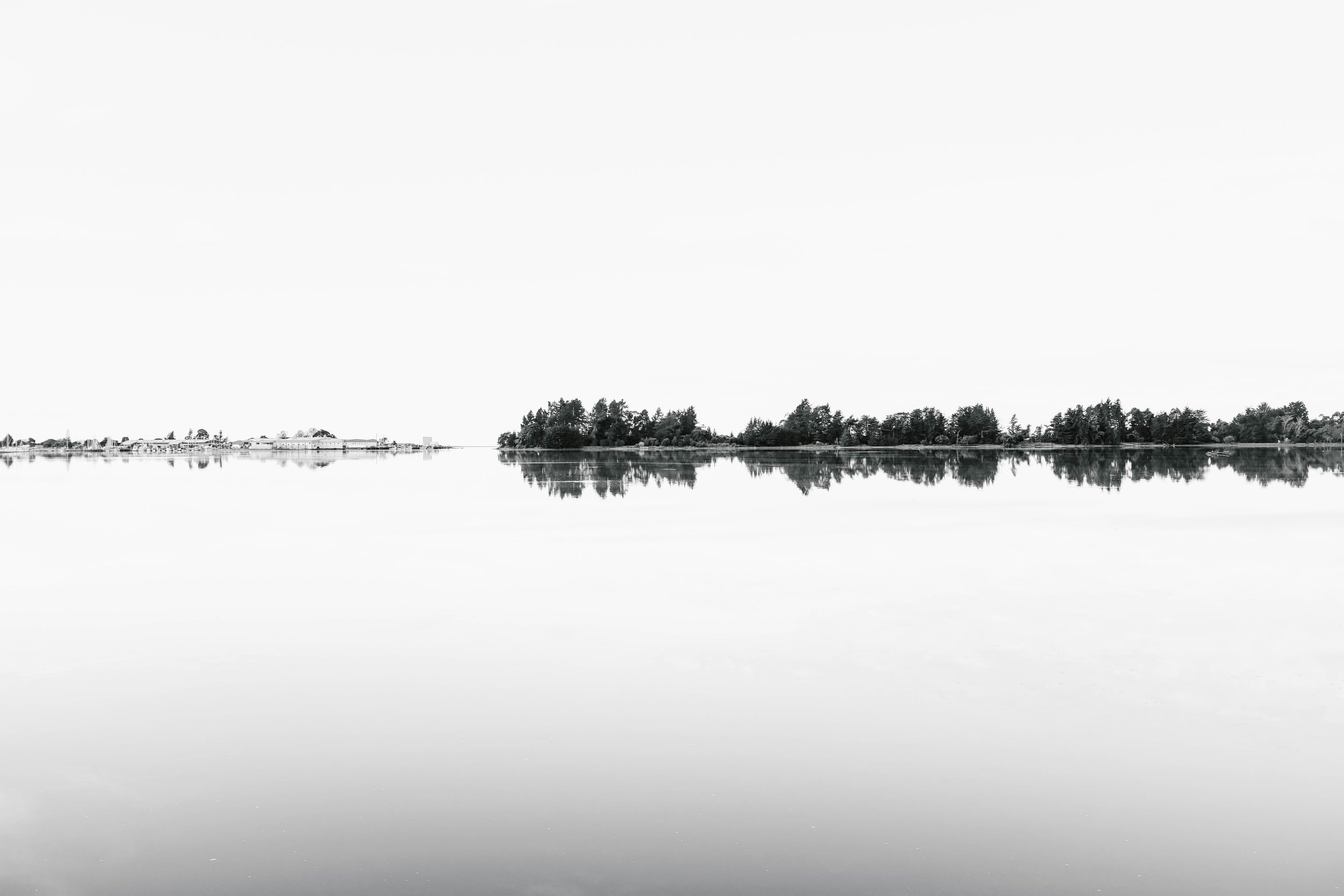How to get great photos for your nonprofit using your smartphone
It can be a challenge to find good photography to accompany a story when your budget is limited. Yet, the right photo can enhance your nonprofit’s storytelling, whether it’s for your website, newsletter, brochure, or even your podcast webpage.
If you are looking for tips on capturing the best possible photos for your nonprofit on a minuscule budget, you’re in the right place.
Tips for taking great nonprofit photos on a budget
Recently I sat down with my friend, photographer and art teacher Amanda Archibald, and asked her to share her best advice for nonprofits looking to DIY their photography using a smartphone camera.
Here are Amanda’s tips for capturing beautiful photos of your nonprofit’s supporters, staff members, events, or programs using your smartphone:
Make sure you have a newer model phone
Newer models have come a long way with photography and do a lot of the heavy lifting when it comes to taking good photos. Amanda suggests using a phone that’s three years old or less in order to capture really great smartphone photos.
Framing
Amanda talked about the term “framing” a lot during our conversation, and called it the number one tool when it comes to storytelling through photography.
“The most essential thing is what you frame within the edges of your camera or your camera app,” she shared.
What you see through your lens – the four walls of the camera viewfinder – indicate what will be present in your picture. The edges are an important consideration.
She suggested that nonprofits always consider what they are including in the frame of the camera and – just as important – what they are leaving out. Be sure you don’t include something in the background that you don’t want, like an errant trashcan or a strange sign. Consider how you are cropping your subject (whom or what you are photographing).
If you are taking a portrait, for instance, don’t frame the person in a funny way, like leaving off a waving hand or cropping them right at the knees.
If your subject is a building, consider what part of it is the most important thing to highlight (for example, you might want to highlight the surrounding nature). Try to capture the whole place if you can, and be sure to get enough ground and sky (but not too much).
And remember the Rule of Thirds when you’re thinking about your frame (you can read all about the rule of thirds here) – it’s a useful tool for creating interesting and engaging compositions. Amanda suggests moving your subject to the left or right of your screen, or closer to the top or the bottom (versus the subject directly in the center in every photo).
Consider the action
If you are taking photos of a person, consider what they are doing. What is it you need to capture based on their actions?
Amanda asked these questions:
“Are they holding something in their hands? Are they talking to somebody else? Are they behind a table? Are they handing out something to someone else?”Try to get detail shots of what they are doing, and then try snapping some photos from farther away.
For example, if you are taking pictures of a volunteer filling a bag with food, capture some photos of the volunteer’s hands at work. Then, back up and take a photo of the entirety of what they are doing.
Find natural light
Natural light is ideal whenever possible. “You want to try and minimize the yellowy or the blue light casts that you're going to get [inside], so natural light is always really great,” shared Amanda.
For portraits of people, she suggests moving your subject near a window or a door with natural light shining in, or even going outside if possible. However, if you are going outside, avoid standing right in bright sunlight since it can cast shadows and force people to squint.
Instead, look for a shady area, perhaps under a tree or beside a building. (Plus, buildings can also offer nice backdrops if you can find a large, blank, interesting wall.)
Considering the time of day can be helpful for finding great natural light if you aren’t limited to taking photos at a specific time (like for an event). For portraits, she suggests taking photographs earlier in the day or later in the afternoon so you can find more shade and avoid the harsher sunlight.
If you can’t be outdoors, move around to places where there is a lot of light and where your subject can be seen clearly. You can always color correct later, but be sure to check that there are no big shadows on someone’s face or bright light in the background behind them.
“You really want to try to move [when indoors] to a place where the light is going to be shining onto your subject,” Amanda says.
If you are photographing an event and the lighting isn’t great, ask your subject to take some quick photos after the event in a location that offers better lighting, like outside near the building. For example, you might not necessarily need a picture of the person speaking at a podium under bright fluorescent lights, but having a great picture of the person speaking somewhere in a better location could be valuable.
She also suggests that novice photographers avoid using the flash, as it can be hard to control for good lighting.
Move around
Movement can help you get different frames from different angles that might result in a better photo. You can get in close to your subject and get farther way. You can move around your space and try taking photos from different angles. You can also consider moving from eye-level to below or above (by standing on a chair, for instance).
For example, if you need to photograph a building, consider where you’re standing in order to get a photo that captures the entire space. You may have to venture across the street to get a wider view, and you may need to move to different sides. Afterwards, you can decide what worked best.
Movement can also help you find the right lighting. Whether it’s literally moving outside, or moving a few steps to the left or right so the light isn’t right behind your subject, finding the right light might be a simple case of being willing to move around and try new spaces or angles.
Even moving the smartphone (camera) itself can be beneficial. Try vertical shots as well as horizontal.
Don’t be afraid to take a lot of photos. The more photos you take, the better your chances of finding the one with just the right angle and composition.
“It's helpful in storytelling to have a mix,” Amanda shared, “and you later curate the way you want the story to unfold through the visuals. Take a mix, change up your angles, don't stand in one place for every single photograph, move around a little bit and then take some photos that are close up.”
Get to know your subject
If you are taking photos of a person, such as a donor, volunteer, staff member, or program participant, spend some time getting to know them.
“I love to chitchat with people and make small talk,” Amanda said. “I like to get to know a little bit about who they are so that then I can try to find their light when I'm taking the photographs. ‘How can I make them smile? How can I make them feel at ease? How can I make them happy?’”
Get permission
Not everyone wants to see their face smiling back at them from the latest brochure, so be sure to confirm that any person you’re photographing has given you permission to be photographed (and to share their photograph). Ask them to sign a consent form that includes all the ways you might use their likeness (such as on your website, in your podcast promotions, in a brochure, etc.).
Edit your photos
The latest smartphones do a lot of the editing for you, but enhancing your photos a little bit can go a long way. Consider cropping, straightening, brightening, contrasting, and color correcting.
For example, you might crop out something in the background, straighten the angle of a building, brighten and contrast to add a little more interest, and change the hue (perhaps your photo is too yellow/warm, or too blue/cold).
Amanda’s favorite apps for editing on her phone, besides her phone’s photo app, are Instagram and Snapseed.
Experiment & Practice
If you’re just starting out with photography, even photography on your phone, practice and experiment to get better and become more comfortable with the process. “The more you actually get out there and start taking photos of things that interest you, or your events, or your colleagues, the better you're going to get,” says Amanda.
She suggests that new photographers enjoy the process and play around to gain experience and learn more about what makes a good photo.
Listen as Amanda shares how she captures small spaces:
Amanda is known for taking beautiful photos of very small spaces, including tiny homes. I asked her about taking tiny home photos that have been featured on Apartment Therapy. Press play to hear what she said, including her tips for how you can photograph in tiny spaces with a smartphone.
how to take photos of virtual events
Because so many nonprofits are doing virtual events these days, Amanda and I also touched on ideas for getting beautiful photographs that tell the story of an event taking place online. Here are some quick tips for creating photos of virtual events:
Announce that you’re going to take a screenshot of the event and ask everyone to hold something that is relevant to the event. Perhaps it’s a piece of paper and a pen, or a coffee mug, or even their smartphone.
Ask participants to do an activity all at once for you to capture to help tell the story of your event.
Stage your desk area around your computer and take a photo of your computer and its surroundings. Consider the Rule of Thirds and have your computer placed a little to the side. You might have other objects around that enhance the composition, like a coffee mug, pen and paper, or a small lamp.
Final tips for creating beautiful photos for your nonprofit
If you want to continue to expand your photography skills, there are many free or low-cost workshops online. Amanda suggests checking sites like Creative Live, Udemy, and SkillShare, or even watching YouTube videos about taking great photos with your phone or editing with photo apps.
And finally, if you feel your own photography skills aren’t giving you what you need and you have a small budget to hire someone, Amanda says it’s worth reaching out to up and coming photographers. There are many who might consider charging a fee that matches your budget.
Happy photographing!
Want more articles like this right in your inbox?
To see this content like this and more ideas on how good storytelling can create connection, inspire audiences, and help you build a more sustainable source of support for your nonprofit, please subscribe to my newsletter.
Comments or questions? Please DM me on social media!
Photo by Tyler Pruitt on Unsplash





